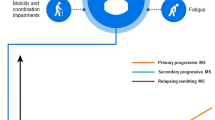Opinion statement
Appropriate anticopper therapy for Wilson’s disease is the critical element in halting progression of the disease and allowing patient recovery. Selection of the drug or drugs to use for a particular patient depends on the stage of the disease (ie, initial acutely ill patient versus chronic maintenance patient) and the type of presentation (ie, neurologic/psychiatric versus hepatic). I treat patients initially presenting with hepatic disease with a combination of zinc and trientine, those presenting with neurologic/psychiatric disease with tetrathiomolybdate, and those in the maintenance phase with zinc.
Similar content being viewed by others
References and Recommended Reading
Brewer GJ, Yuzbasiyan-Gurkan V: Wilson disease. Medicine 1992, 71:139–164.
Scheinberg IH, Sternlieb I: Wilson’s disease. In Major Problems in Internal Medicine, vol 23. Edited by Smith LH Jr. Philadelphia: W.B. Saunders Company; 1984.
Bull PC, Thomas GR, Rommens JM, et al.: The Wilson disease gene is a putative copper transporting P-type ATPase similar to the Menkes gene. Nat Genet 1993, 5:327–337.
Tanzi RE, Petrukhin K, Chernov I, et al.: The Wilson disease gene is a copper transporting ATPase with homology to the Menkes disease gene. Nat Genet 1993, 5:44–50.
Yamaguchi Y, Heiny ME, Gitlin JD: Isolation and characterization of a human liver cDNA as a candidate gene for Wilson disease. Biochem Biophys Res Commun 1993, 197:271–277.
Fink JK, Hedera P, Brewer GJ: Hepatolenticular degeneration (Wilson’s disease). Neurologist 2000, 5:171–185.
Brewer GJ, Fink JK, Hedera P: Diagnosis and treatment of Wilson’s disease. Semin Neurol 1999, 19:261–270. A major problem in Wilson’s disease is failure to recognize the possibility of this diagnosis. This article provides helpful guidelines on what findings should trigger screening for Wilson’s disease. It also provides more detail on treating the neurologic symptoms.
Akil M, Brewer GJ: Psychiatric and behavioral abnormalities in Wilson’s disease. Adv Neurol 1995, 65:171–178.
Cox DW: Review: molecular approaches to inherited liver disease. Focus on Wilson’s disease. J Gastroenterol Hepatol 1997, 12:S251-S255.
Sternlieb I, Scheinberg IH: Prevention of Wilson’s disease in asymptomatic patients. N Engl J Med 1968, 278:352–359.
Brewer GJ, Dick RD, Yuzbasiyan-Gurkan V, et al.: Treatment of Wilson’s disease with zinc: XIII. Therapy with zinc in presymptomatic patients from the time of diagnosis. J Lab Clin Med 1994, 123:849–858.
Brewer GJ, Dick RD, Johnson VD, et al.: Treatment of Wilson’s disease with zinc: XV. Long-term follow-up studies. J Lab Clin Med 1998, 132:264–278. In our opinion, zinc is the lifetime treatment of choice for Wilson’s disease. This paper was written for the clinician to make it easy to understand why and how to use zinc and how to monitor the patient’s copper status. This is “must” reading for the clinician who is going to treat patients with Wilson’s disease.
Walshe JM: Treatment of Wilson’s disease with trientine (triethylene tetramine) dihydrochloride. Lancet 1982, 1:643–647.
Walshe JM: Penicillamine. A new oral therapy for Wilson’s disease. Am J Med 1956, 21:487–495.
Brewer GJ, Johnson V, Dick RD, et al.: Treatment of Wilson’s disease with ammonium tetrathiomolybdate: II. Initial therapy in 33 neurologically affected patients and follow-up on zinc therapy. Arch Neurol 1996, 53:1017–1025. It is important to understand the risks of using penicillamine to treat patients presenting with neurologic disorders and to consider possible alternatives. Tetrathiomolybdate is an excellent alternative if it is feasible for the patient to travel to the research setting.
Nazer H, Ede RJ, Mowat AP, Williams R: Wilson’s disease: clinical presentation and use of prognostic index. Gut 1986, 27:1377–1381. The Nazer index is an excellent mechanism for determining whether a given patient is likely to survive on medical therapy. It can also be used serially during medical therapy to evaluate whether the patient has deteriorated to the wrong side of the scale. Obviously, it should be used only as a guide.
Yuzbasiyan-Gurkan V, Grider A, Nostrant T, et al.: The treatment of Wilson’s disease with zinc: X. Intestinal metallothionein induction. J Lab Clin Med 1992, 120:380–386.
Brewer GJ, Dick RD, Yuzbasiyan-Gurkan V, et al.: Initial therapy of Wilson’s disease patients with tetrathiomolybdate. Arch Neurol 1991, 48:42–47.
Brewer GJ, Dick RD, Johnson V, et al.: Treatment of Wilson’s disease with tetrathiomolybdate. I. Initial therapy in 17 neurologically affected patients. Arch Neurol 1994, 51:545–554.
Brewer GJ, Terry CA, Aisen AM, Hill GM: Worsening of neurologic syndrome in patients with Wilson’s disease with initial penicillamine therapy. Arch Neurol 1987, 44:490–493.
Mjolnerod OK, Dommerud SA, Rasmussen K, Gjeruldsen ST: Congenital connective tissue defect probably due to D-penicillamine treatment in pregnancy. Lancet 1971, 1:673–675.
Solomon L, Abrams G, Dinner M, Bergman L: Neonatal abnormalities associated with D-penicillamine treatment during pregnancy. N Engl J Med 1977, 296:54–55.
Keen CL, Lonnerdal B, Hurley LS: Teratogenic effect of copper deficiency and excess. In Inflammatory Diseases and Copper. Edited by Sorenson JRJ. Clifton, NJ: Humana Press; 1982:109–121.
Food and Drug Administration: Teratologic evaluation of FDA 71–49 (zinc sulfate). Food and Drug Research Laboratories, Inc.; 1973, 1974. [United States Department of Commerce Publications PD-221805 and PB 267.]
Author information
Authors and Affiliations
Rights and permissions
About this article
Cite this article
Brewer, G.J. Wilson’s disease. Curr Treat Options Neurol 2, 193–203 (2000). https://doi.org/10.1007/s11940-000-0002-5
Issue Date:
DOI: https://doi.org/10.1007/s11940-000-0002-5




